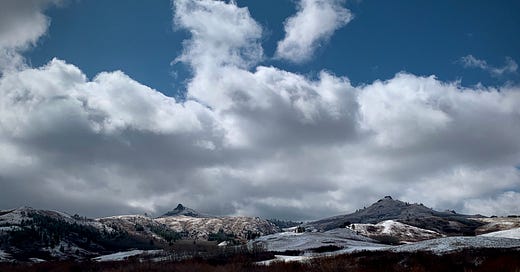Welcome!
Welcome to EastKeep! Thank you for giving it a read. You can learn more about this newsletter and me here, and I intend to write about things that span the space of my somewhat interesting professional experiences and my maybe-boring-maybe-not personal undertakings.
Indigenous Language Courses
A little background is probably helpful before I launch into this topic of decolonizing education. I work for the Montana Digital Academy, the state’s virtual school. We are a supplemental program for public students across the state, offering asynchronous courses which are taught by Montana public school teachers. As an organization that is funded and directed by the Montana Legislature, we were tasked in 2021 with developing and offering courses in Indigenous languages in collaboration with the tribes that want them. This is a huge, complicated, and immensely gratifying undertaking. And I am pleased to say it’s my job. Here’s more.
I’ve been reading a lot lately about the importance of educational sovereignty for tribal people, because it informs my work as a (White) course developer of these Indigenous language classes. After teaching actual reservation students in a face-to-face setting for two decades, it’s very satisfying to do this work although I’m a little removed from the reality of the classroom. I left my job as a reservation high school teacher and district grants manager in 2021, at a time when I was leaving a lot of other things too.
Educational sovereignty is not something that was on my mind while I was teaching, other than as it appeared directly in front of me every day, and at that time I was not able to see the whole forest. Last year though, I was busy developing a Cree language course in close collaboration with the Chippewa Cree Tribe Department of Indian Education and made a number of visits to the Rocky Boy reservation to plan the class.
We had these cloud-level talks about assessment, because how do you assess Indigenous language learning? And especially, in an Indigenous context, is it appropriate to use a very European settler-colonizer mindset to throw an arbitrary grade onto a student’s growth?
It’s obscene, really, when you think about it, what public education does to students. That’s another newsletter for sure. But here, I was trying to figure out how to decolonize these courses. Not just with assessment, but with the very structure of the courses, our approach to students and the cultural treasures we wanted them to learn about.
Last fall I was taking a Native American Studies class through Montana State University so I decided to write my research paper on the topic of what it means to decolonize a course, particularly from the perspective of a White educator. I read the likes of Greg Cajete and Vine Deloria, Jr., and others, to get a handle on some of it.
Much of what they say is attainable and circles into themes: First, no education of Indigenous children should occur without the complete and exclusive input of tribal thinkers, particularly elders. Second, community and the natural world as they overlap with students’ experiences must play a key role in the education of Indigenous students. Third, respect for this natural world, the land, and other humans is a critical element of Indigenous approaches to the world, including education.
In the courses I build, then, I’ve been trying to have conversations with Indigenous educators from the language communities about how we can incorporate a more tribal worldview into the courses. In the Cree class for example, we have a single repeated phrase at the start of every week, something akin to a good-morning song that you might hear at an Indigenous encampment, or a cultural protocol of hand-shaking you might see at a community event.
I include as much land-based material as I can, which has necessitated multiple (long) drives to various reservations to conduct photo- and audio-collection alongside a tribal expert who is potentially donating their time to the cause.
And, incorporating cultural information as appropriate is part of this work. If you are unfamiliar with working in tribal spaces, you may not know that tribes are sovereign nations with distinct and unique cultural protocols, further differentiated by varying approaches to these protocols within communities. So it is crucial for me to learn what tribes want to share of their culture, with whom, and for what purposes, before charging in with my ideas about anything. My ideas don’t matter, and that’s how it should be.
But there is one stumbling block that I cannot overcome which is inherent in the undertaking: In Power and Place, Daniel Wildcat equated Indigenization with “truly mak[ing] Native educational institutions our own.” Existing outside the first person plural “our” in that line necessitates my asking, as an outsider how do I participate in this activity of Indigenizing the courses I am required to design, except in a superficial and deferential way? I’m planning a newsletter about allyship, although you can read some of my thoughts here.
I’m still pondering how to make peace with taking up space in the role that I do, when perhaps there is another, an Indigenous person, whose job it really should be to develop these courses. Meanwhile, I read books, attend conferences and try to listen carefully. Complete success is impossible, but growth can exist. And I’ll have to be content enough with that.





Go, friend! You're such an example of how this work should be done.
Monica
Good stuff. Wouldn’t expect anything less.